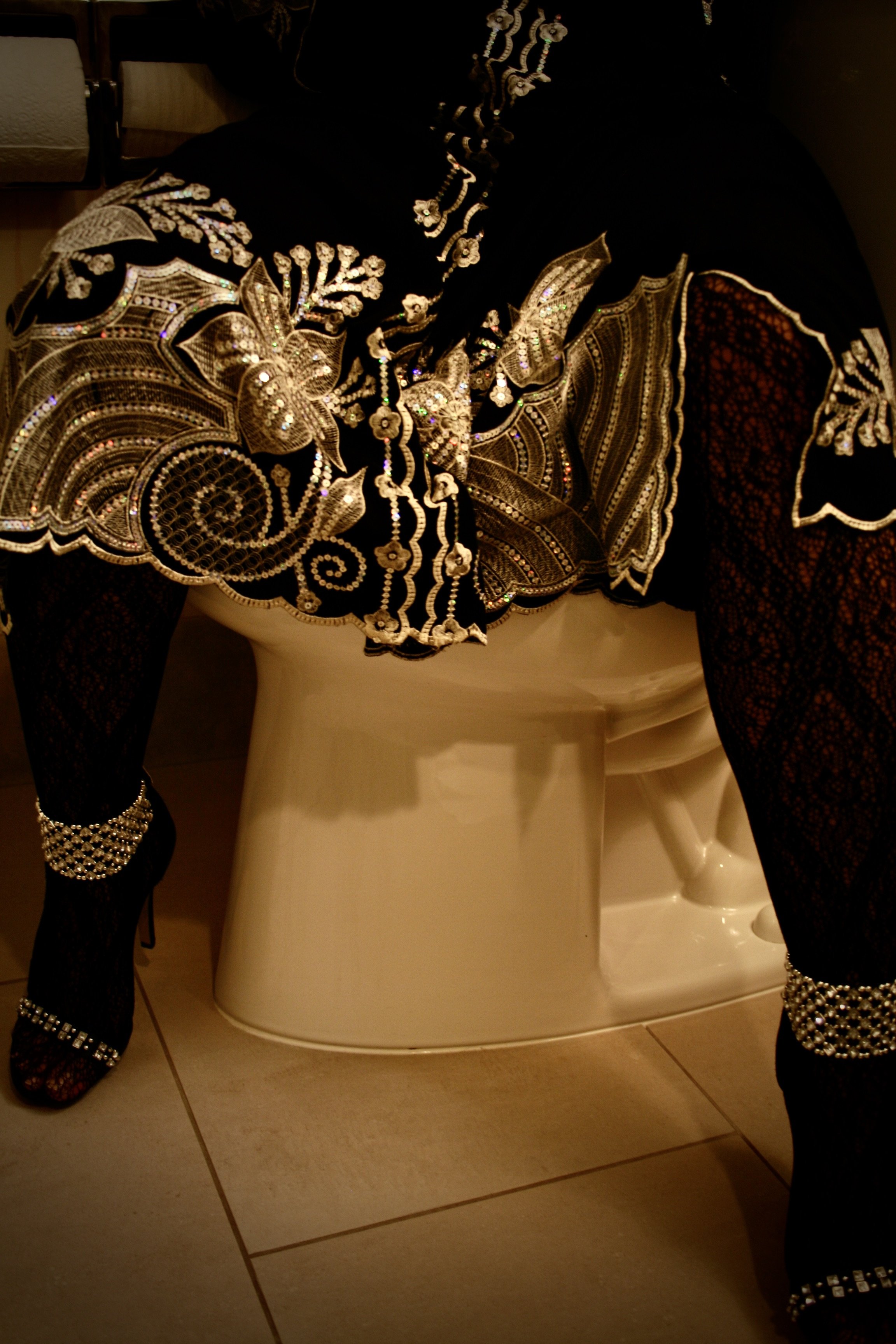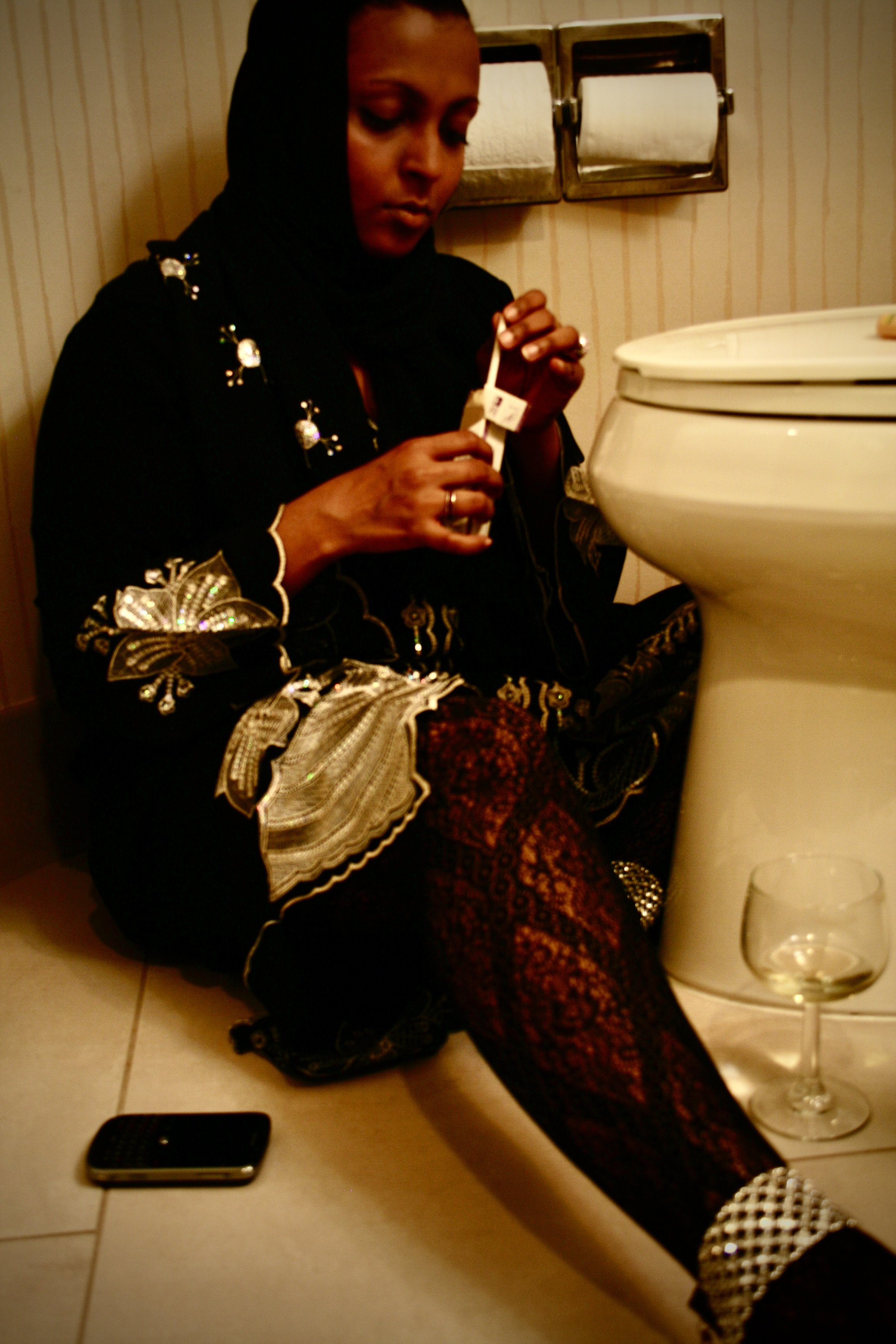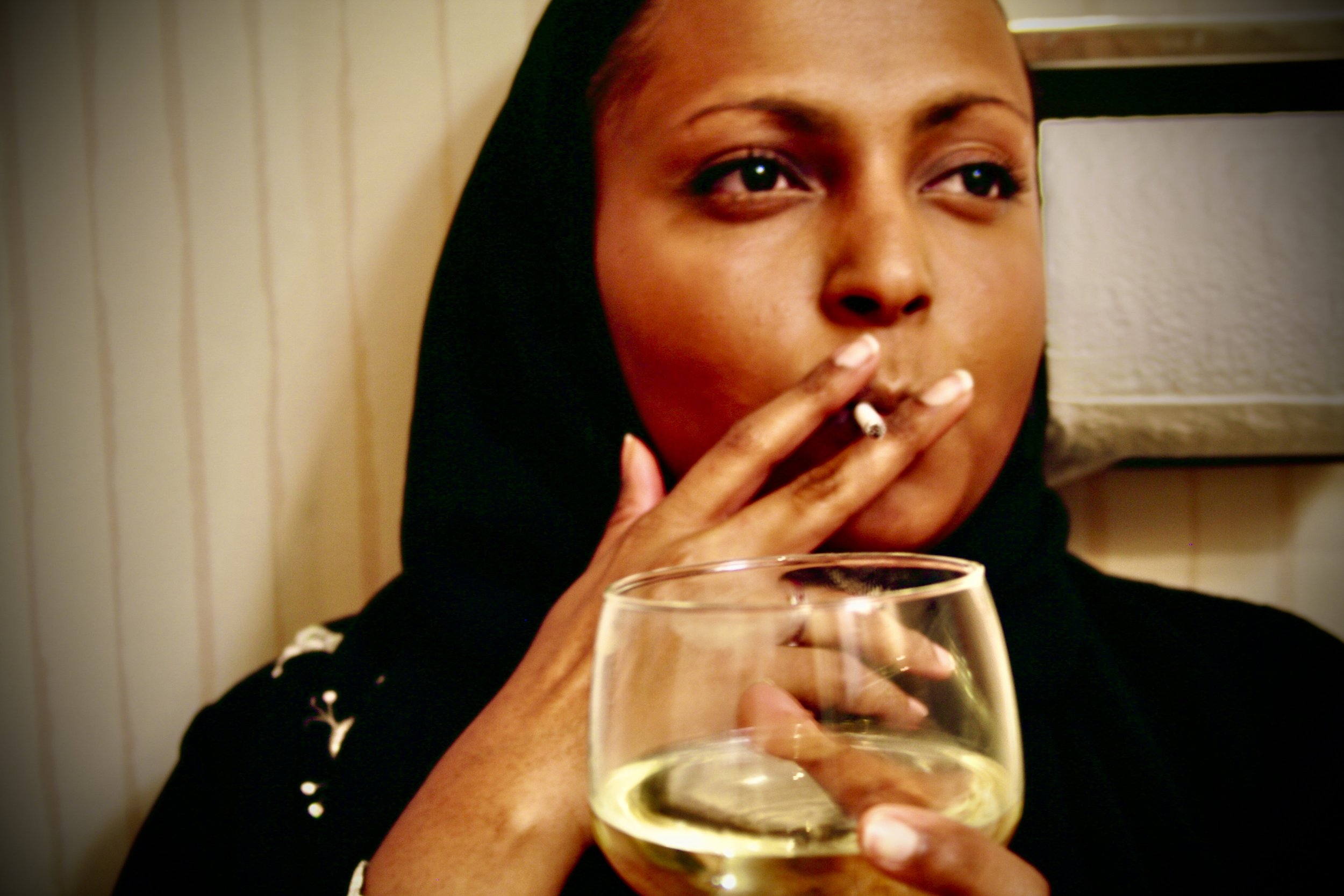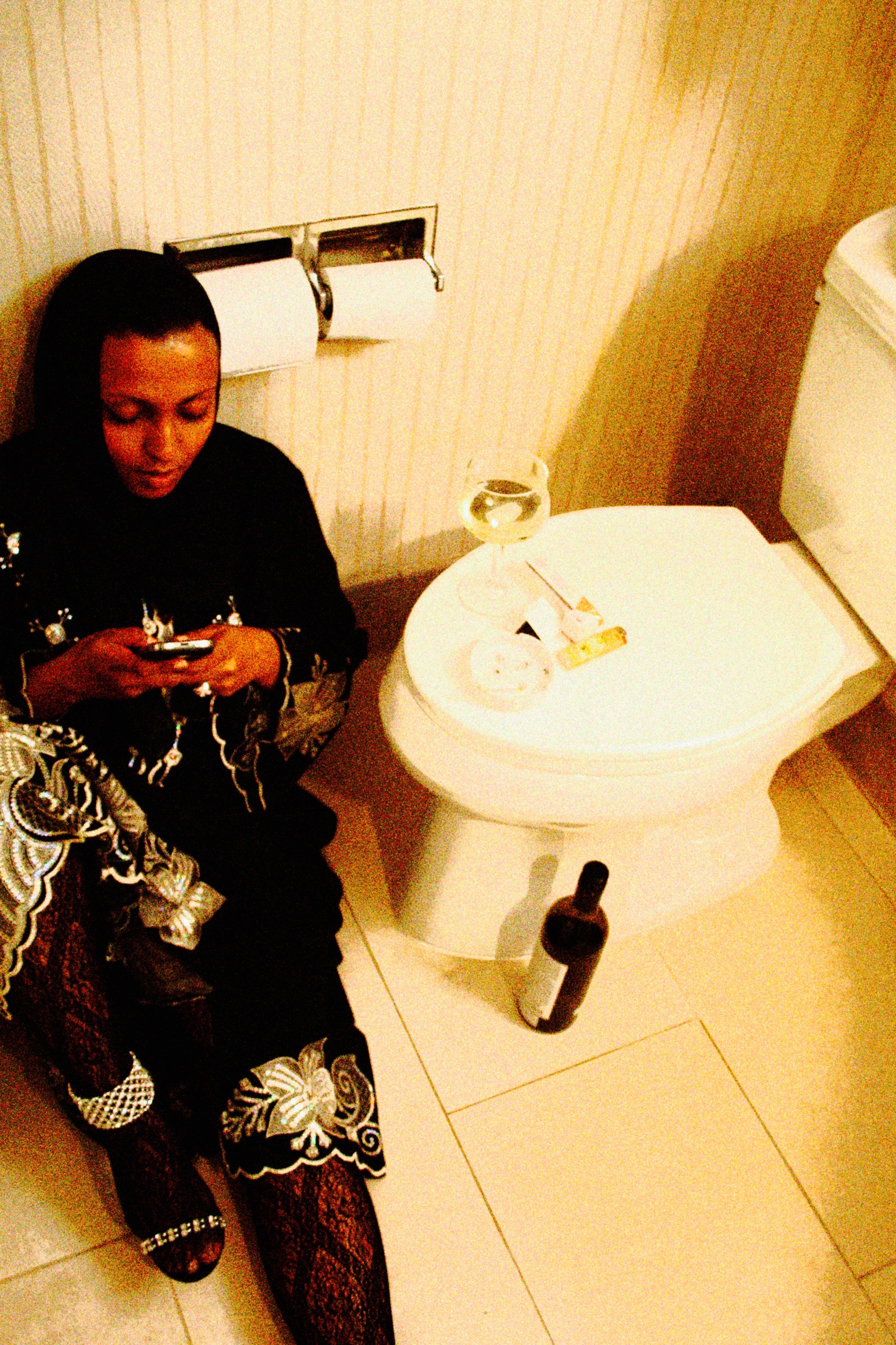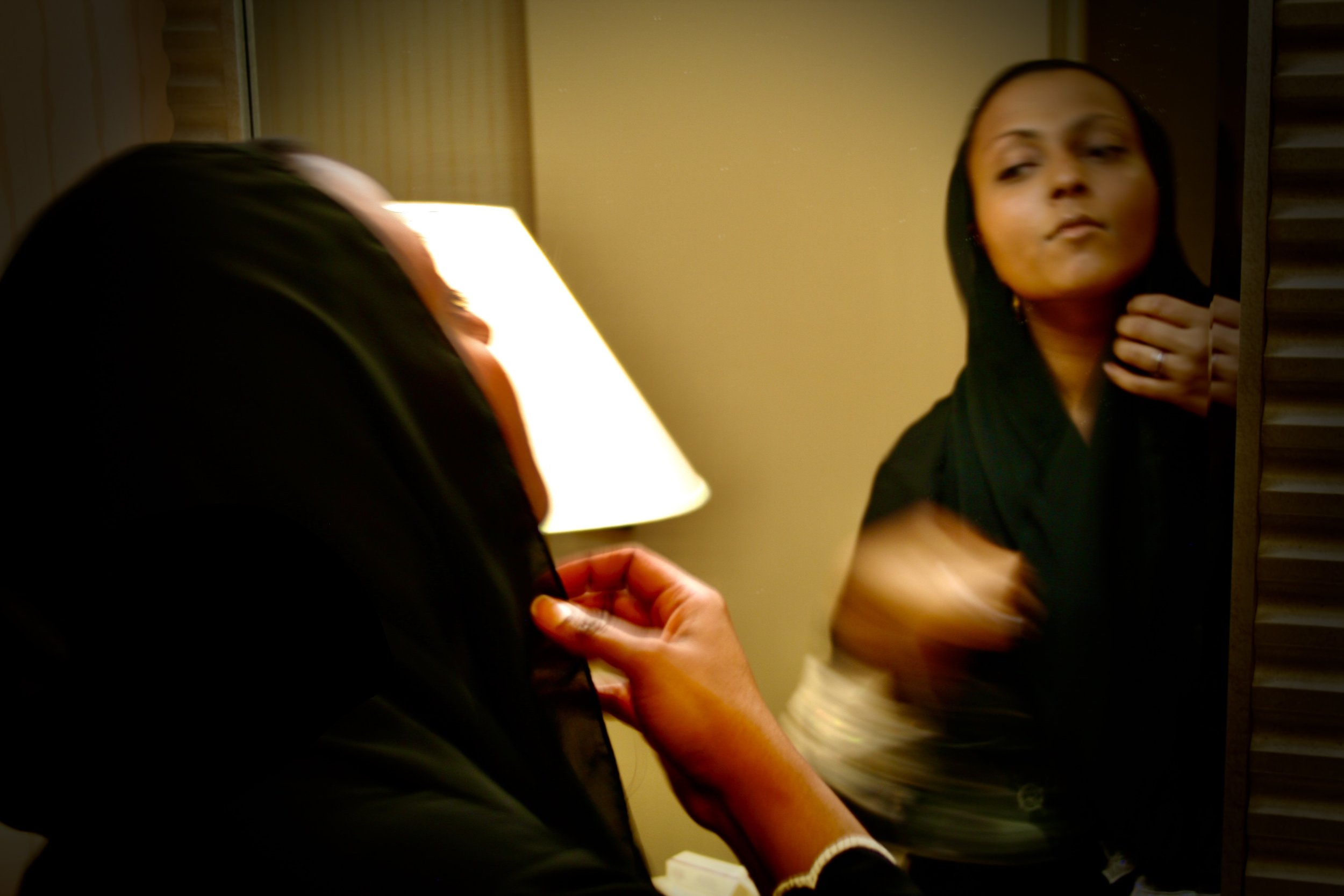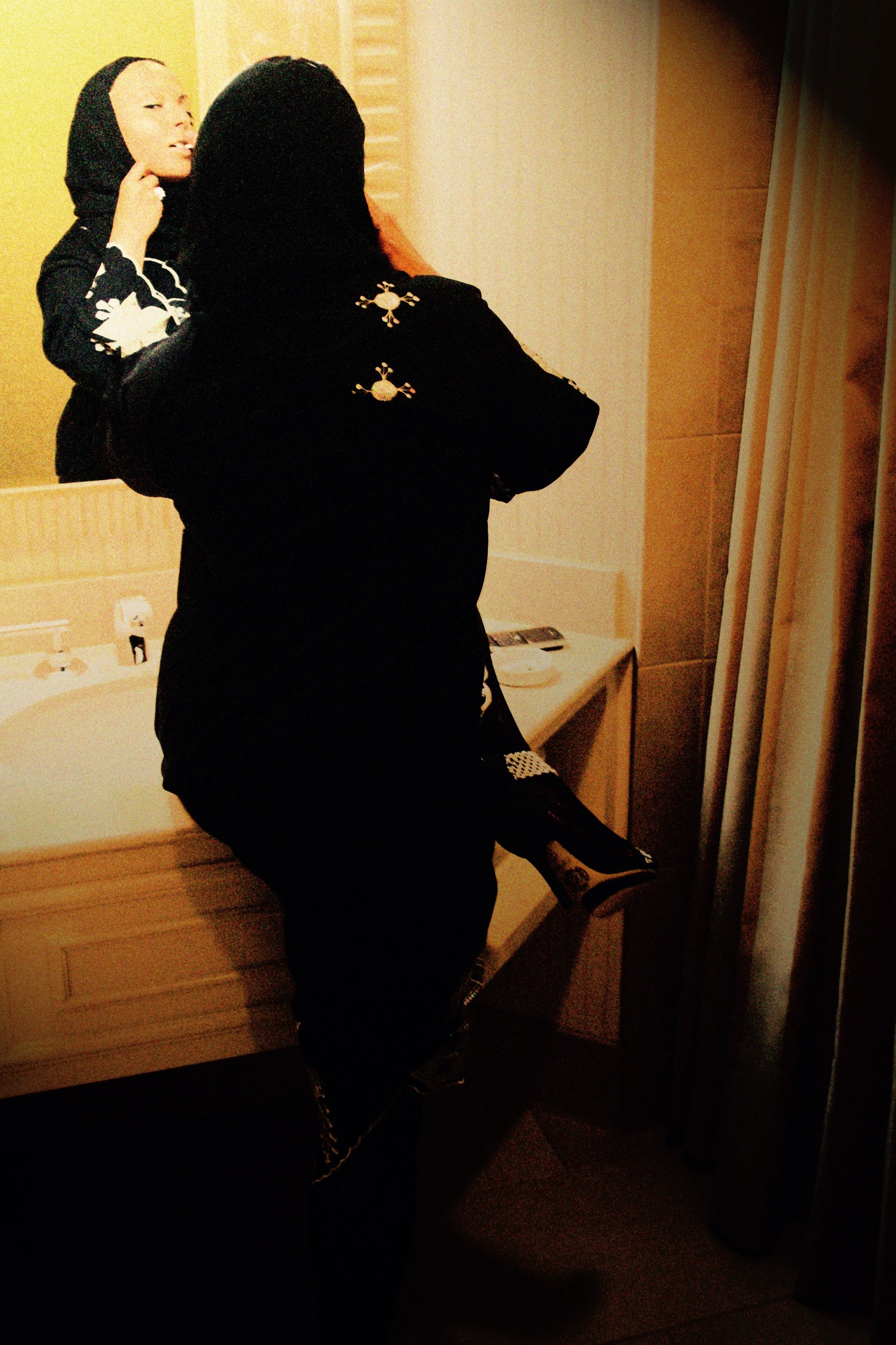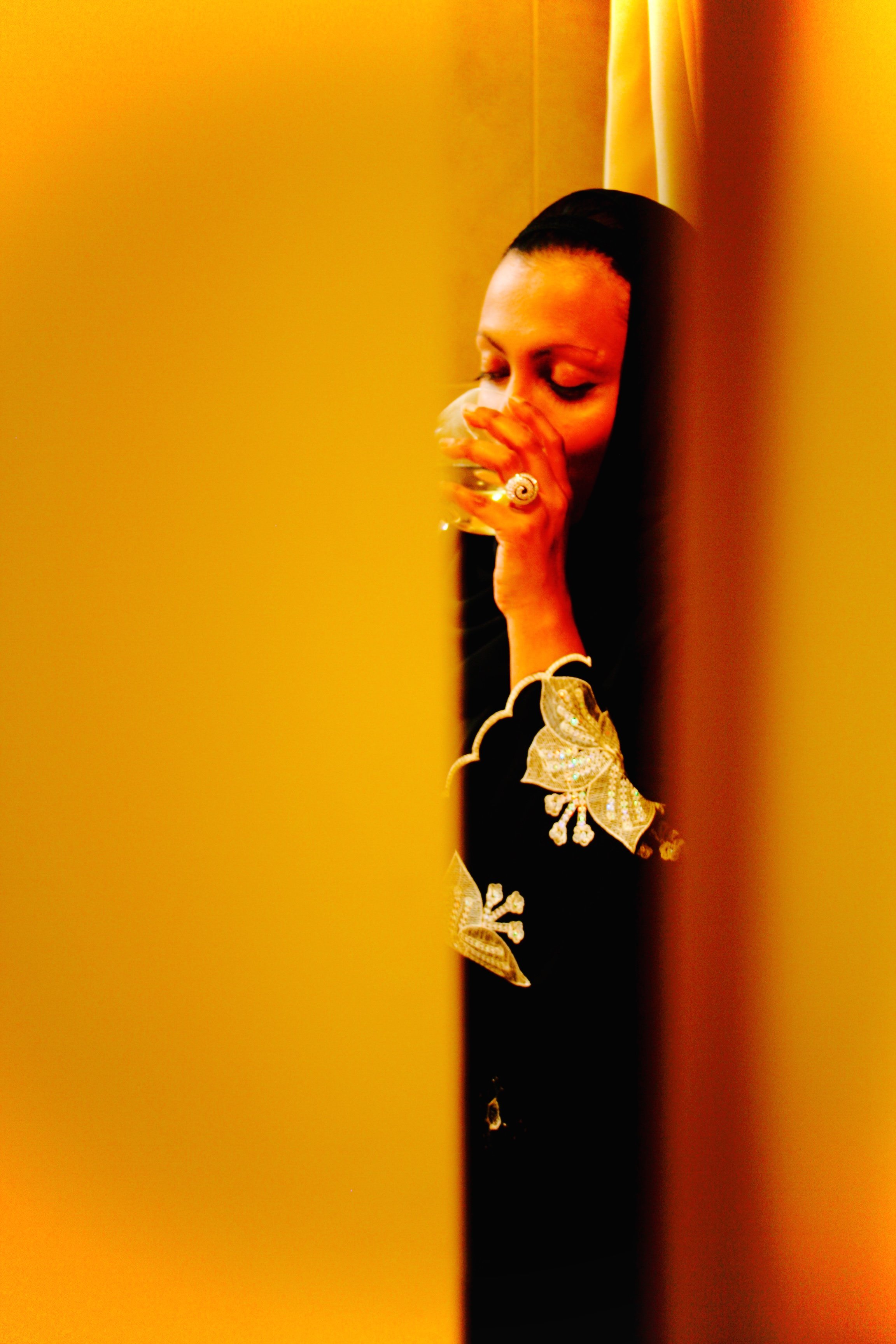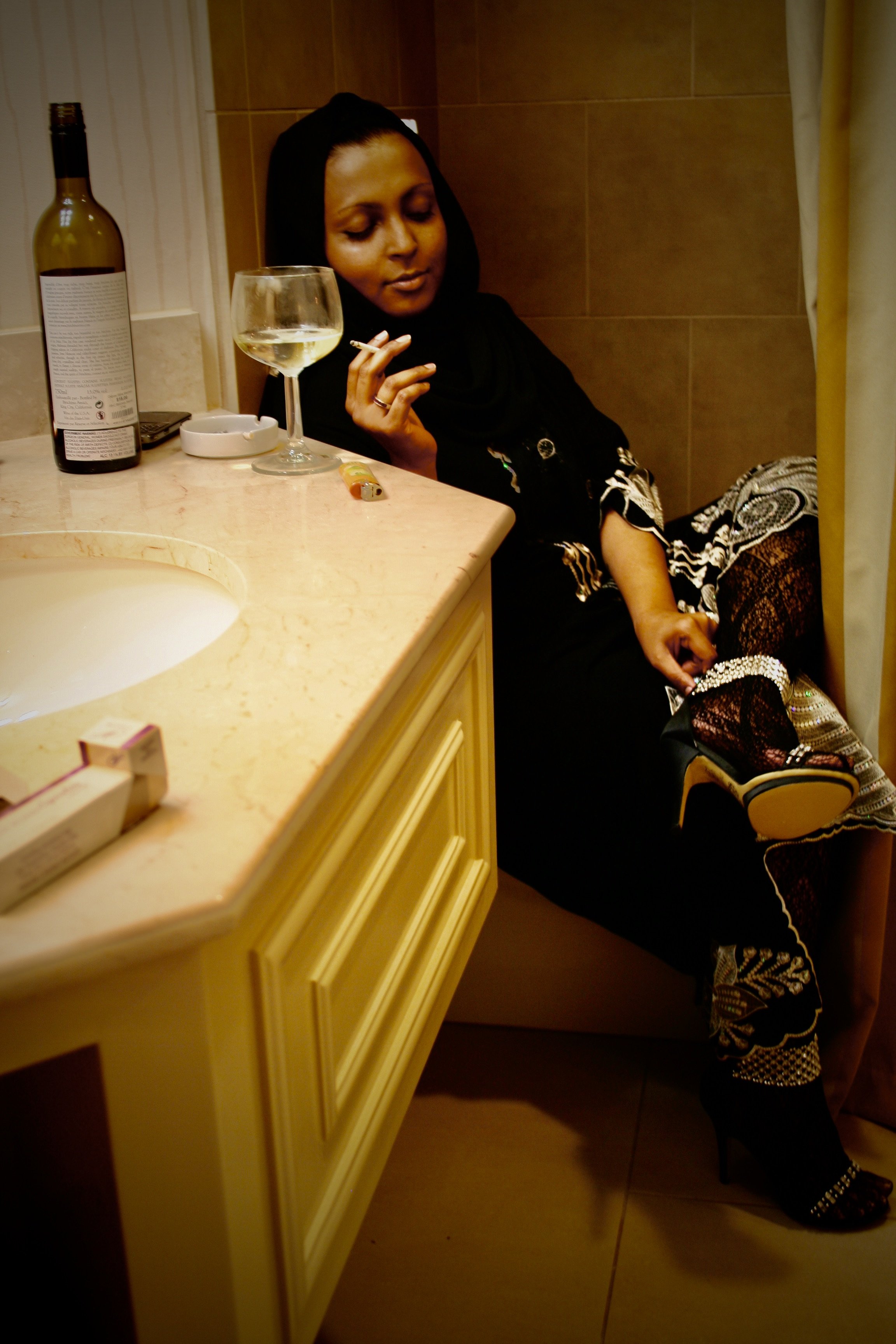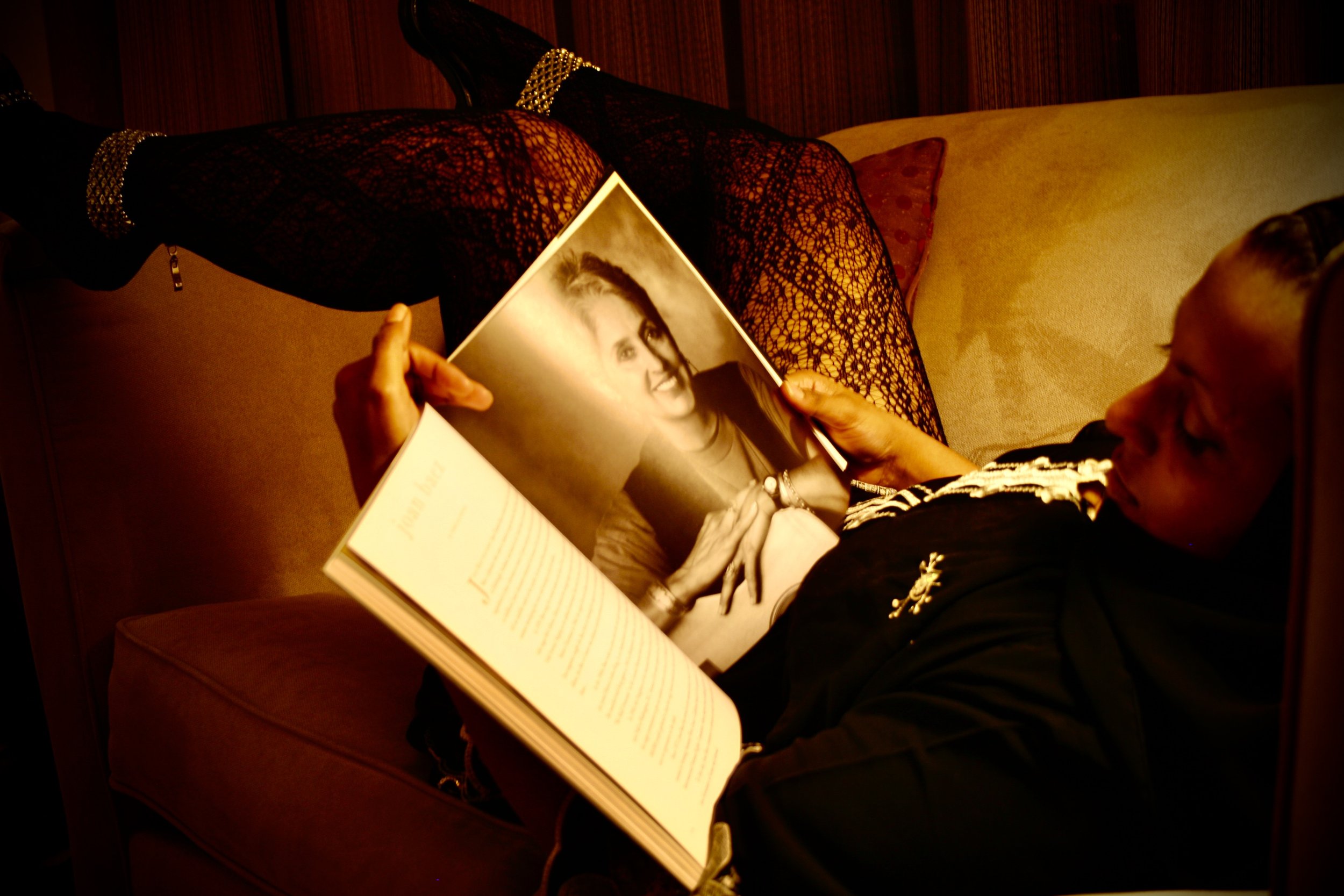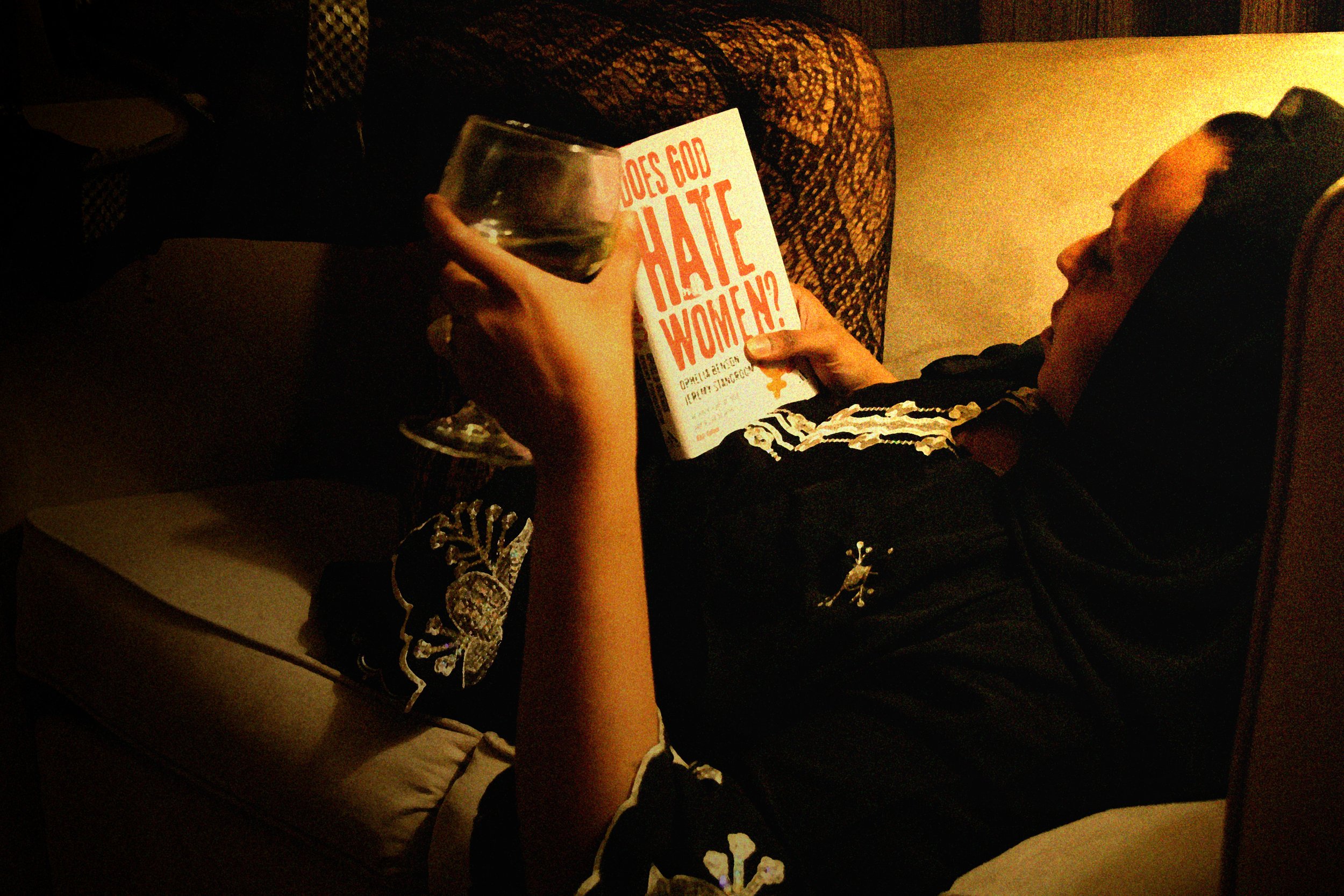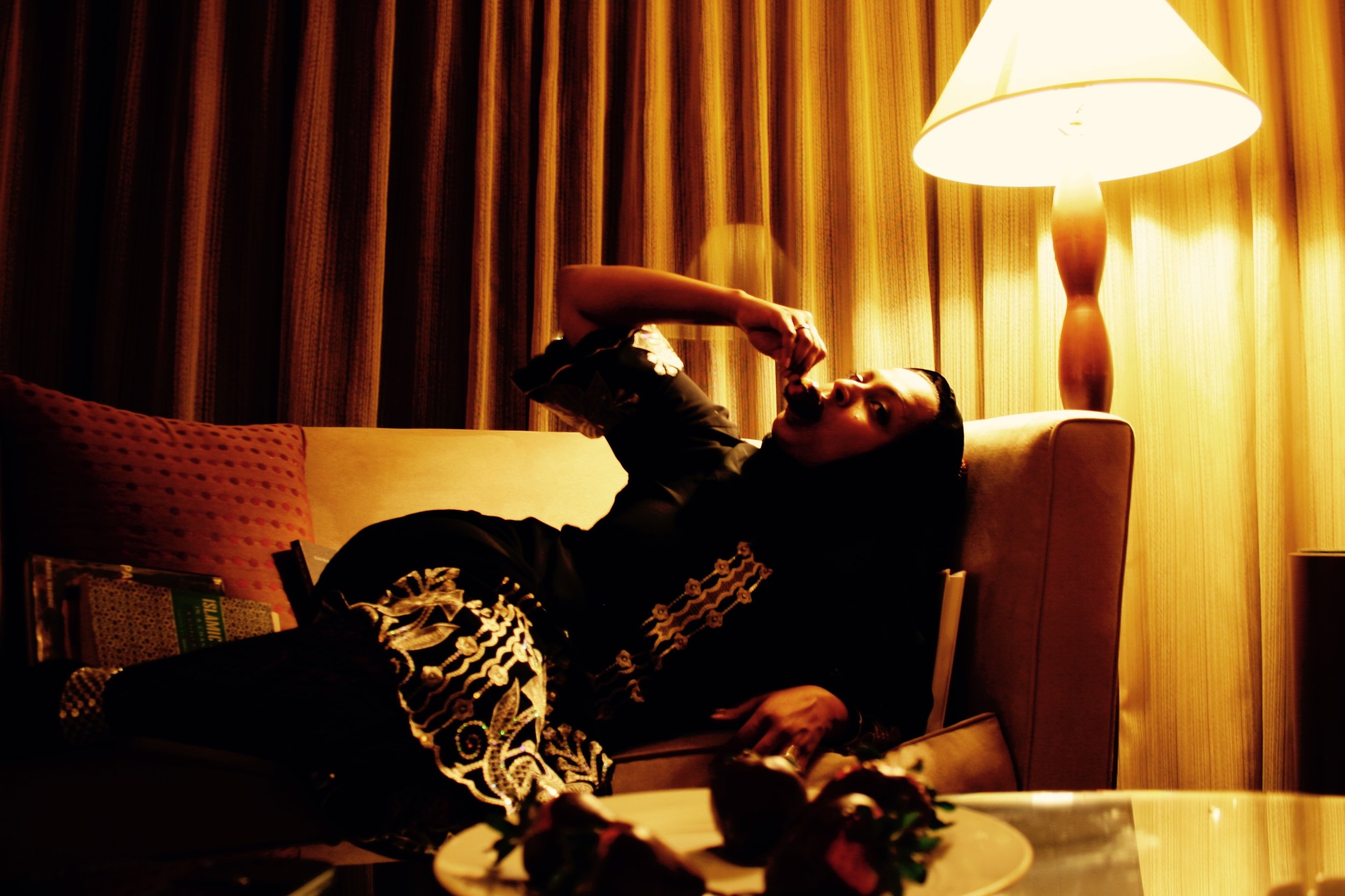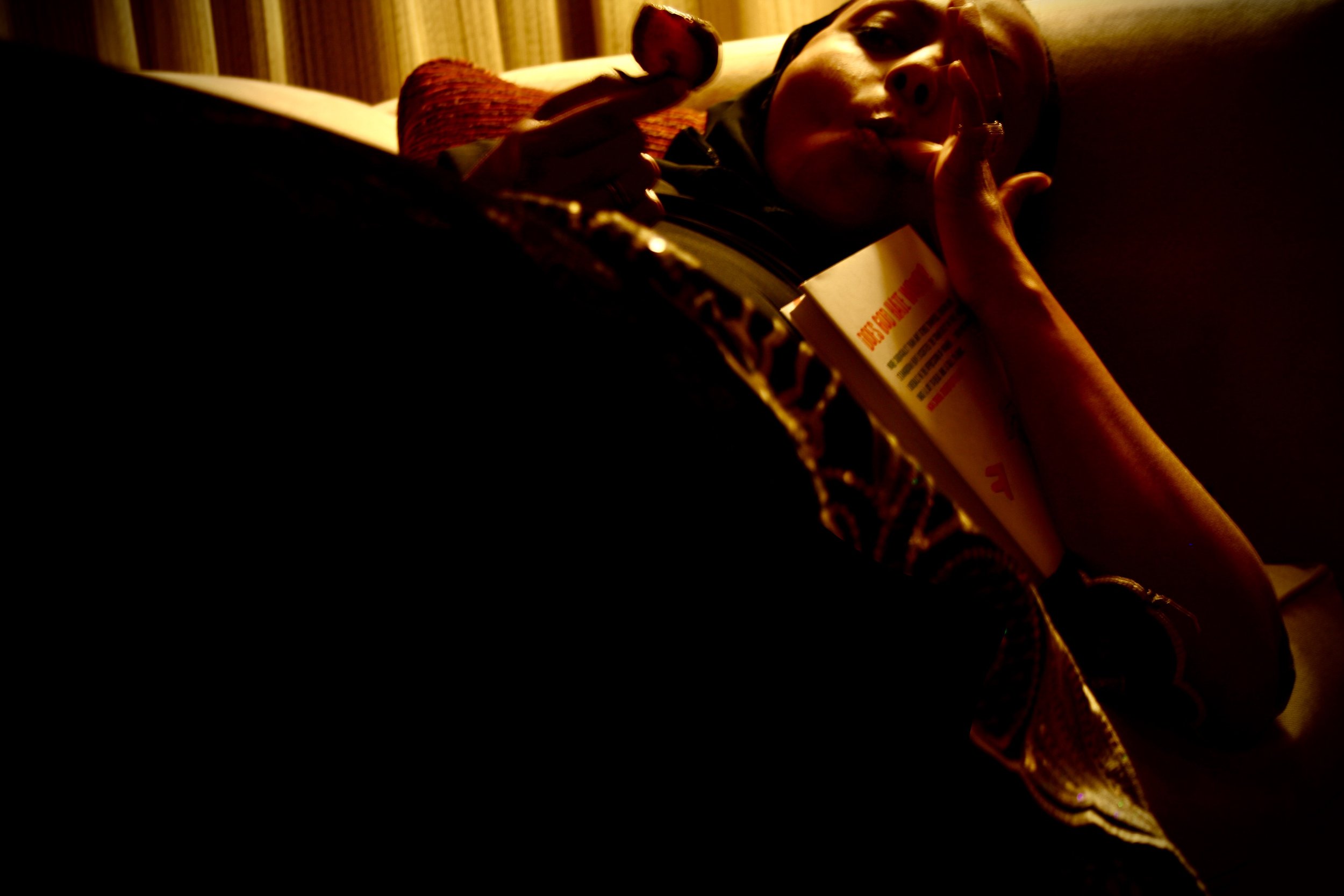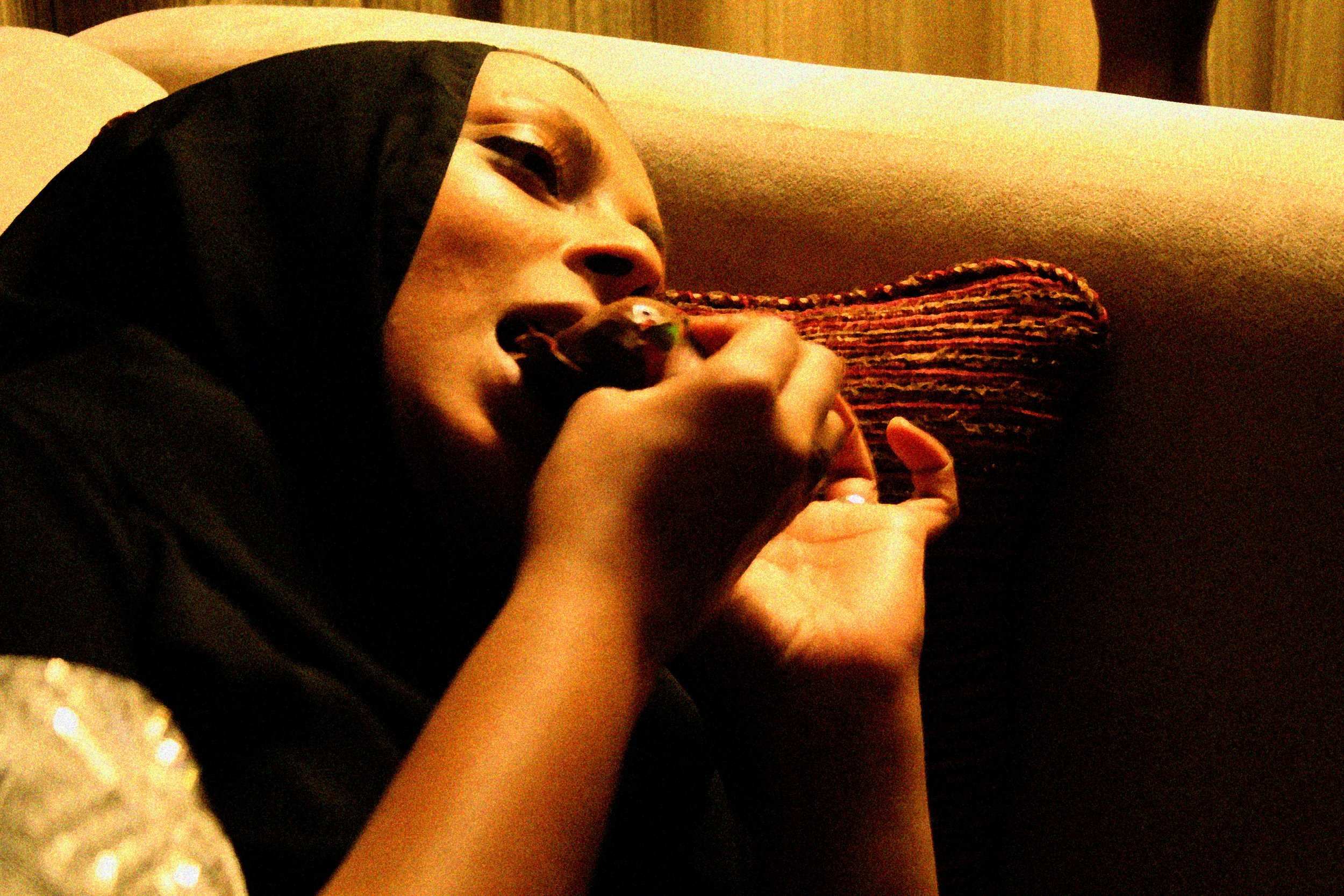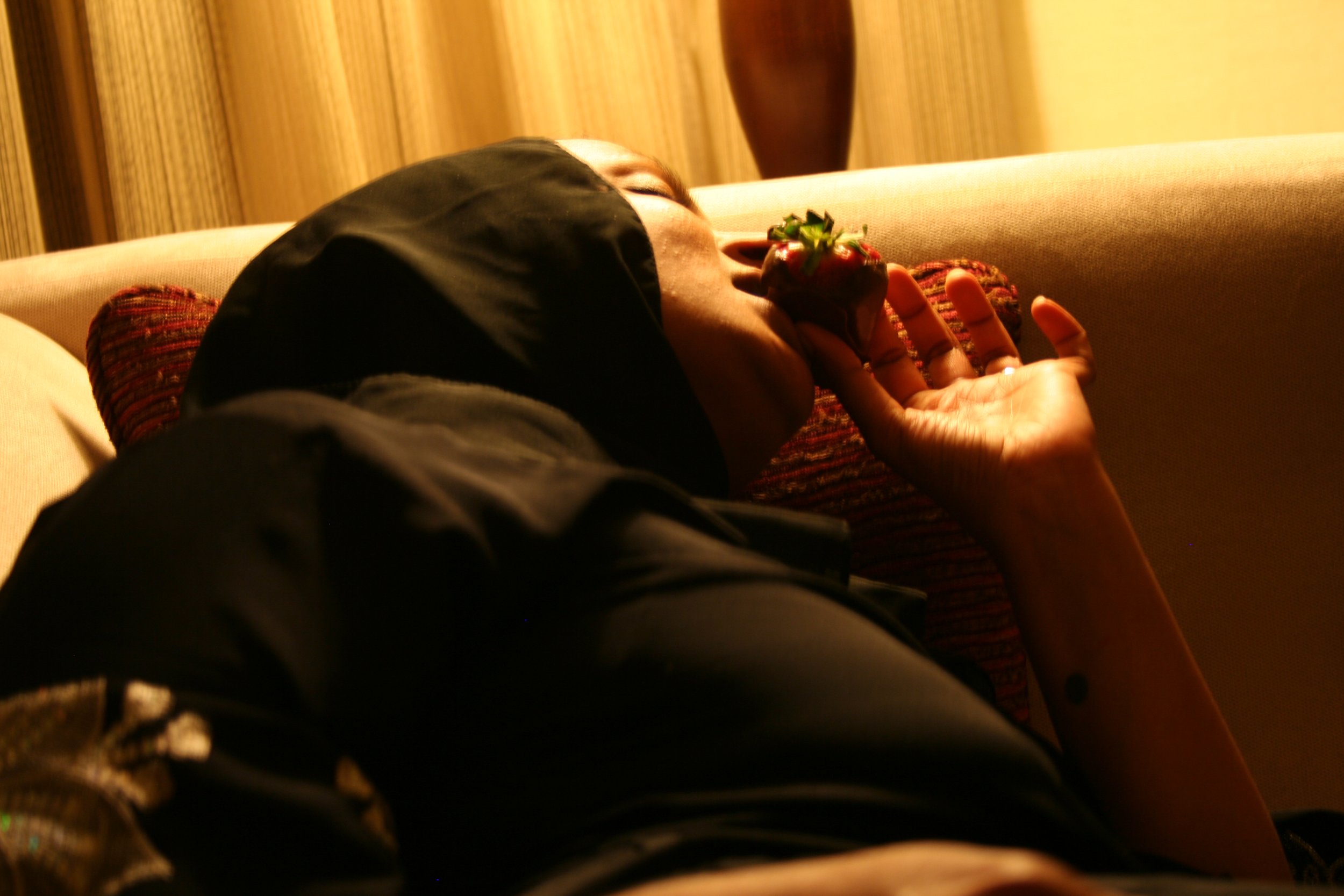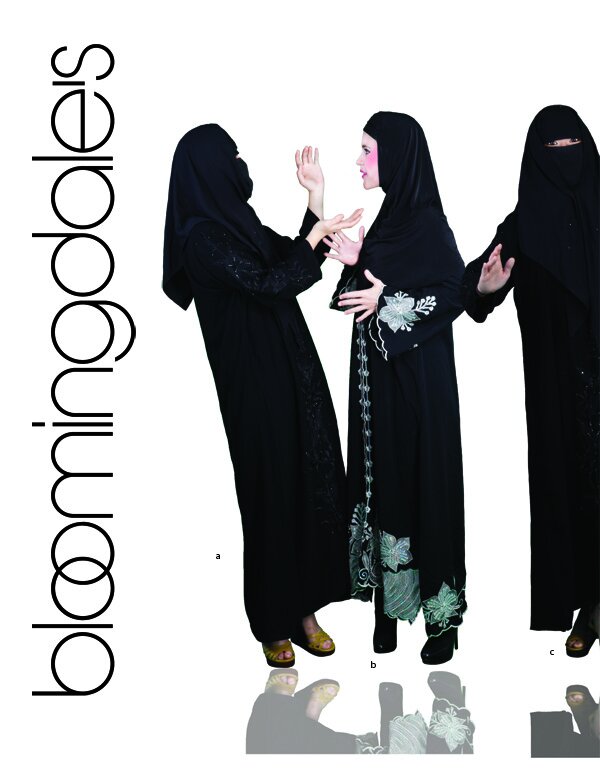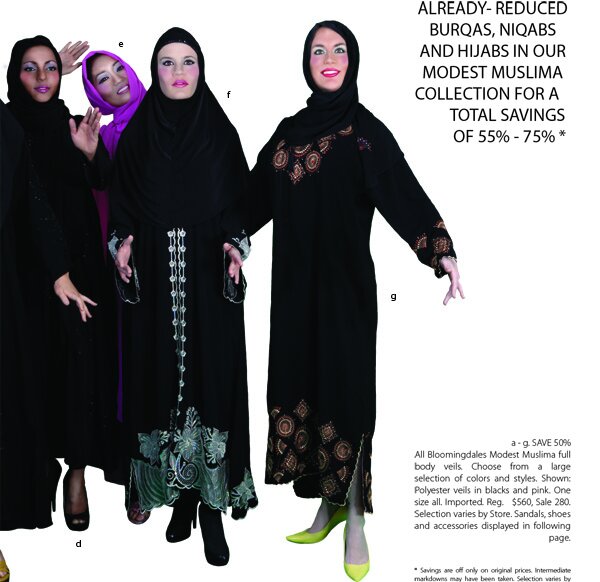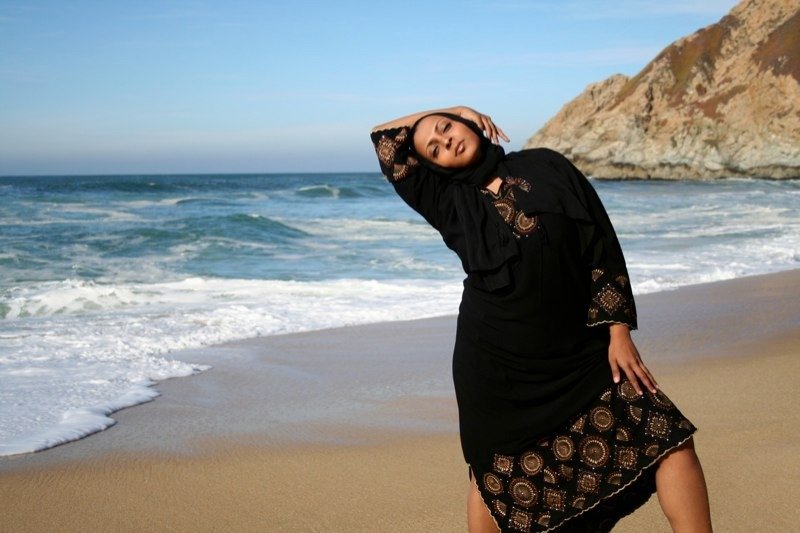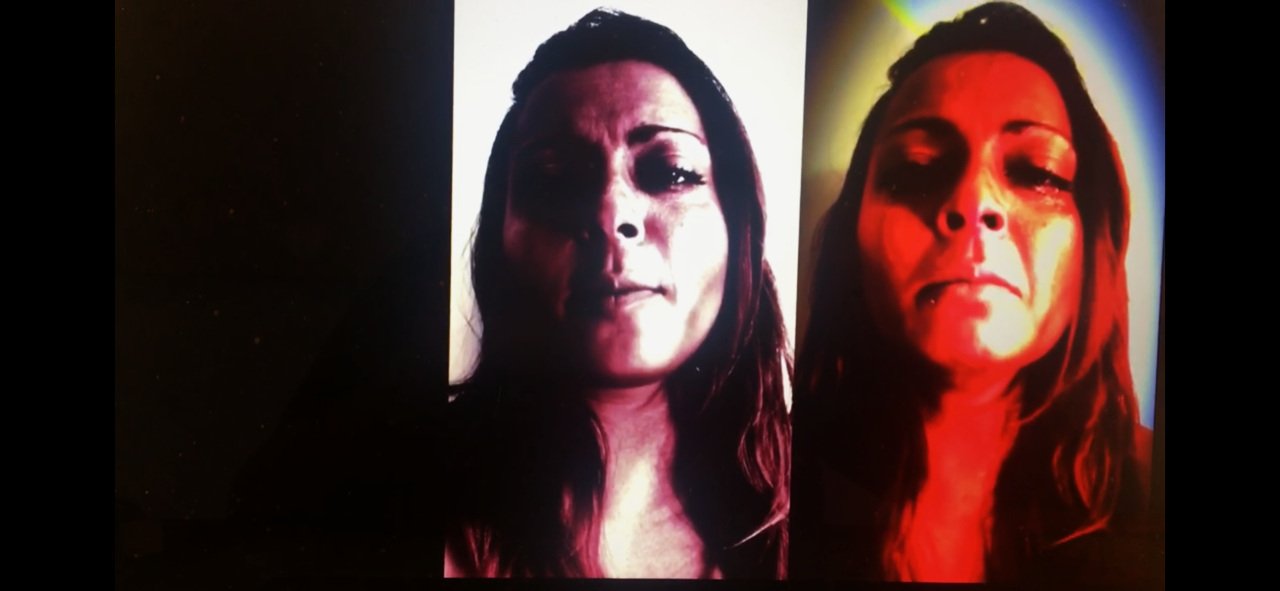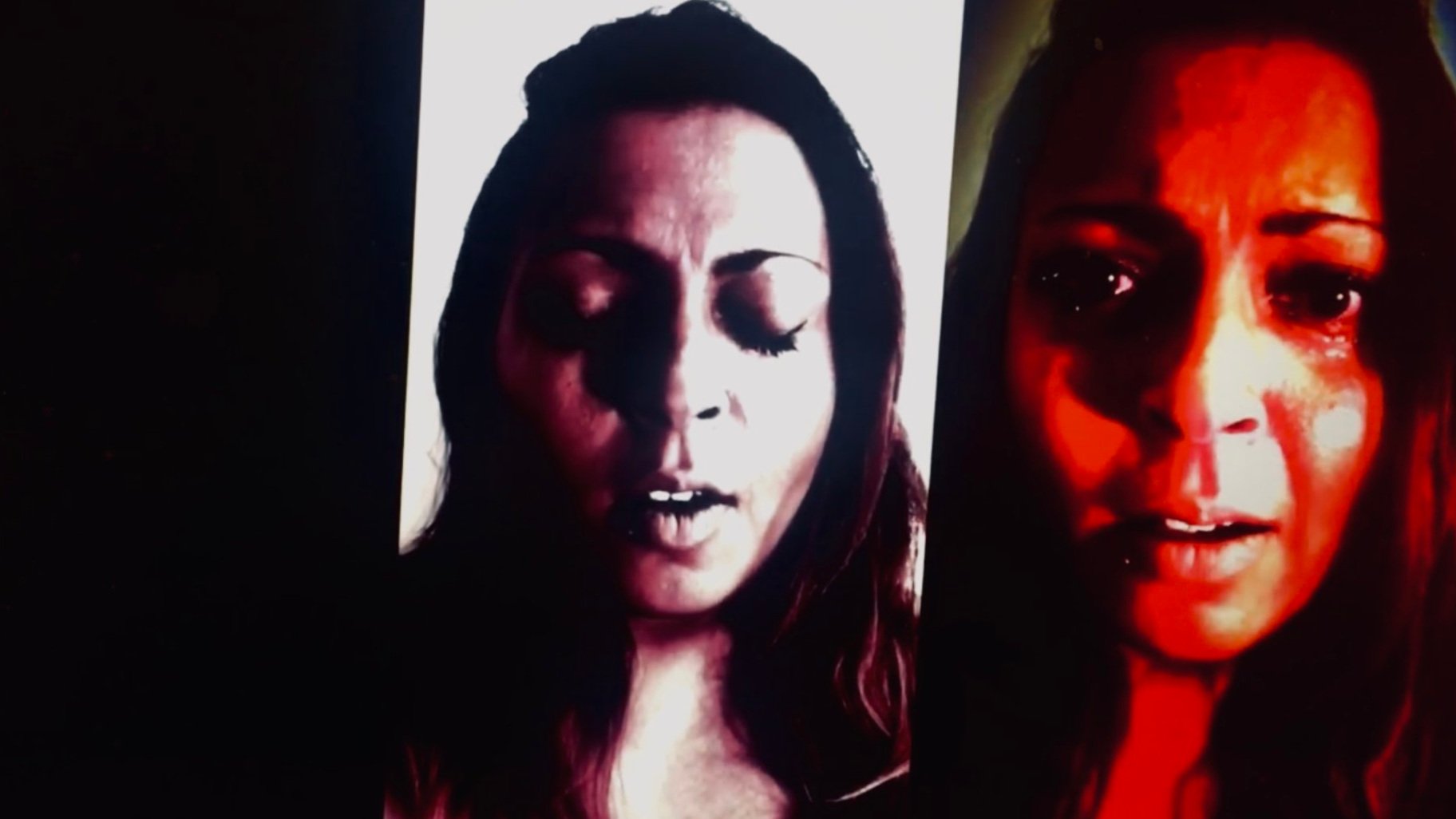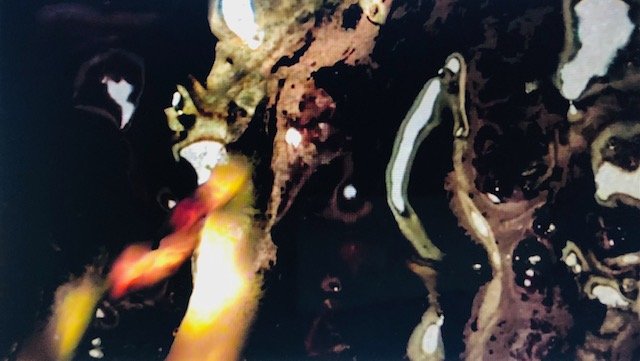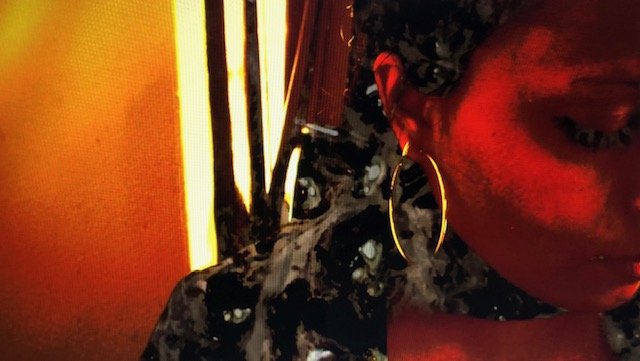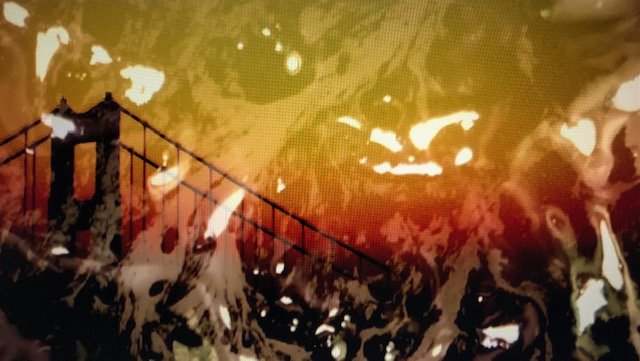“The Islamic Sexual Revolution.”
Photography Series
2011
Based on the book titled Passionate Uprising: Iran’s Sexual Revolution by Pardis Mahdavi, this photographic series is a continuation of former performance-based works “Veiled Woman, Coming Through” (2010).
“The Islamic Sexual Revolution” is less so about the politicized rights and wrongs about the Muslim veil, but rather the autonomous desires and wants of Muslim women. The series is additionally inspired by the interview collected from several Muslim women, residing in the United States, India, and Bangladesh. The data gathered suggested that what was most important for the great majority of women was to be accepted for practicing their own wants, and not be be subject to stigmatization for their choices, and their transgressions. “The Islamic Sexual Revolution” series is based on their narratives.
“The Pink Barbie Rebellion.”
Photographic Series
2011
Before Mattel released its first hijab-wearing Muslim barbie doll in 2017, there was the “Pink Barbie Revolution.” Though the ban on the veil was implemented by French President, Nicolas Sarkozy in 2004, the ban on the full veil (niqab) was implemented in 2010. Sarkozy had quoted, “We are an old country anchored in a certain idea of how to live together. The full veil which completely hides the face is an attack on those values, which for us are so fundamental. […] Citizenship has to be lived with an uncovered face. There can therefore be absolutely no solution other than a ban in all public places” (The Guardian). A country that prides itself in being a champion of secularism, democratic policies, and women’s rights, many French found the ban to be a ploy for further division, especially with the use of the term “us” in his statement. As a supporter of women’s choices, and someone who had read the Holy Quran, there is no mention of required face covering aside from the clear mention of covering “private parts” as a sign of preserving modesty. The divide that erupted didn’t only affect Muslim women in France, but globally, resulting in this series.
“Pink Barbie Rebellion.” Photographic Series, 2011.
“Pink Barbie Rebellion.” Photographic Series, 2011.
“Inclusivity at Bloomingdale’s”
Photographic Series turned into Bloomingdale’s Catalogs
2011
“Inclusivity at Bloomingdale’s” is a continuation of several other art projects done between 2010 and 2012 on the Muslim veil. As a South Asian feminist artist, who has Muslim family members and friends, I was always skeptical of the ban on the veil, largely because I fundamentally believe the full veil to be a construct of patriarchal enactments, however, know all too well that women’s choices need to be recognized. Social and familial restrictions are also at play, if women are given the opportunity to progress in their educational and professional endeavors through the wearing of the veil, it certainly works to their advantage than being restricted in all aspects of “progress.”
As a scholar of Gender Studies and Violence Studies, I draw a relational comparison with alcohol bans put into place across several states in India. Over 80% of married Indian men drink heavily, and over 57% of married women in India are abused by their husbands because of their dependence on alcohol (alcoholism). Many states responded by placing a complete alcohol ban, which has reduced crimes against women and girls, but with the ban, rose the marketing of cheap, highly toxic liquor production, which became the go-to source especially during Covid lockdowns between 2020- 2021. What resulted was a spike in crimes against women. Many scholars and economists, since, have recommended the implementation of a “gradual ban,” because this is not only a fight against masculinist culture of drinking, but the market economy (India being the largest consumer of whiskey and other spirits in the world, in close ties with China and the United States). What is proposed is large sums of funding to go towards rehabilitation programs, family wellness centers, and edcational implementation against the use of alcohol. Immediate bans may have the potential of causing further damage.
Hence, “Inclusivity at Bloomingdale’s” is an effort to represent the Muslim veil as a fashion symbol, modeling the garment on the bodies of women who are geographically, culturally, and socially diverse. Though, as politicized the socio-cultural landscape is around the veil, this project carries with it enormous critical problems.
“Sports Illustrated: Burkha Edition”
Photographic Series
San Francisco, CA
2012
The “Sports Illustrated” series was inspired by the story of a woman in a high-ranking status within a United Nations (UN) based agency (Identity left undisclosed due to security reasons). Having lived in the West, she stated that she found herself most comfortable in western clothing. However, after marrying a man from Balochistan (a northern province of Pakistan, bordering Afghanistan), she was encouraged to wear the niqab to not fall victim to the male gaze. What she experienced was that despite wearing the full-body veil, she was sexually groped and fondled by men in multiple occasions, despite her husband being a high-ranking chief of police. Hence, the iconic veil, the symbol of modesty in the eyes of Islamic patriarchy, became a representation of critical questioning. What then, truly is “modesty”? “Sports Illustrated: Burkha Edition” plays with this iconography— is the veil a symbol of modesty, or a symbol of eroticism? The aim of this project is to highlight that it is both and it is neither— the problem lies in the eye of the beholder— the beholder being a collective hypermasculine male identity.
“Lost and Found Archive.”
Photograph
San Francisco, CA
2012
“Lost and Found Archive” is a digitally manipulated photograph of a man in an Afghani burkha. It tells a fictional story of an archived photograph lost in time, only to be found displaying a man in hybrid wear between western pants and shoes and an Afghan burkha. Aged to appear as a photograph taken between the 1850’s and early 1900’s, it incorporates the photographic identities of both Cartes des Visites (Introduced in 1859), and the infamous Brownie Camera introduced by Kodak for the masses in 1900.
“Lost and Found,” which currently rests within a replicated antique 18th century French gilded wooden frame, reveals the era’s opulence and suggested celebrated luxury. Hence, what the viewer is encouraged to see is a man of wealth in a burkha— a merging of two iconography never seen before. Thus, suggesting a possible time in history when men wore burkhas, making the highly identified gendered garment, un-gendered. The photograph attempts to challenge historical narratives and perceptions of what we today see as patriarchal influence and indoctrination.
“Can You Hear Me?”
Angry Brown Woman Series
Video and Photographic Series
5 mins
Still Motion Photography
2018
Political Scientist, Neera Chandhoke examines the process of silencing that women facing gender-based violence have to endure. Chandhoke asserts that the under-representation of women in media and other institutions of power that is primarily male-dominated, subject women to a state of helplessness. Her data indicates that in India women are dropping out of the labor force in rural, urban, and semi-urban landscapes— nearly half the women have dropped out of the labor force between 2017-2018 in rural India, and an 18.2 % decline is seen among women in urban environments. Employment enables women to challenge the institution of patriarchy, but violence against women deters them away from independent incomes, a sense of security, the prospects of mobility freedoms, personal social interactions, to name a few fundamental rights. India’s decline in women’s participation in the workforce confirms their gendered subjugation and the enforcement of growing anchored patriarchy. “Can You Hear Me” displays a woman fearing for her security, demanding help, but remains unheard— a shared story of millions of women.
“Haunting Memories”
Angry Brown Woman Series
Video and Photographic Series 5 mins
Still Motion Photography
2018
“Haunting Memories” is a video and photographic series based on the trauma of remembering. One of the most difficult traumas I experienced post-divorce was the inability to disassociate my memories from the places, activities, things, and time that took place during my formative years. Our experiences, despite in what reference we see them in the present state of mind, are our lived realities. Lived realities are valuable and irreplaceable. People experiencing life-altering moments, such as divorce, associate it with a negative connotation, leading to the reason why millions of people erase old photographs and all physicalities of memories that are associated with that trauma and past life. The biggest challenge I faced was in seeing value in past life experiences that were associated with that trauma. Through much self-reflection and mindfulness, the aim was to allow for these past images and memories associated with them, to dissipate in time. In due time, these memories no longer were seen with clarity, but rather like an old burning film reel, they became more abstract and nonpictorial. “Haunting Memories” is a series based on the process of disassociating haunting memories from past traumas, and giving them a new life, one that is valuable and essential for healing.
“Blind, Selfish, Irresponsible, Dependent”
Angry Brown Woman Series
Video and Photographic Series 5 mins
Still Motion Photography
2017
The parting words imprinted within me, were the cause for enormous guilt, for being the burden of a failed partnership. As an artist, a scholar of violence studies, gender studies, and an activist, it was crucial to use art as a format to document the feeling of guilt and blame. “Blind, Selfish, Irresponsible, Dependent” nurtures feelings of turmoil to unleash the feeling of anger, ultimately leading to the eventual sense of relief. As a feminist researcher, drawing and reflecting on values, attitudes, agendas, personal histories, and feelings has always been a critical path to building and theorizing feminist epistemologies. Part of feminist theorizing is to understand how social norms subordinate women, women’s experiences, and women’s feelings, but simultaneously derive ways to overcome these subordinations. “Blind, Selfish, Irresponsible, Dependent” documents a healing process, and it was made possible through being grounded on the situated knower- self.
I AM WHEAT
I am Wheat
Digital Photographic Series
2019
“I am Wheat” was featured in the Re/Devaluing Colorism exhibition at the Southwest School of Art in San Antonio, Texas. Re/Devaluing Colorism: Intersections of Skin Color and Currency addresses questions of skin color in historic and contemporary social hierarchies. Colorism, as a discriminatory impulse, has a long history and is evident across cultures and countries. This group exhibition comprised of ethnically and socio-economically diverse female artists will respond to this phenomenon and its deleterious outcomes ranging from self-loathing to the sexualization of women of “indeterminate” origin. “I am Wheat” highlights the common use of the term “wheat” to describe the fairer skin complexion within matrimonial and dating sites in India. A commonly used term, carries with it complexities of caste, and class identities.
I am Wheat. Digital Photographic Series, 2019.



